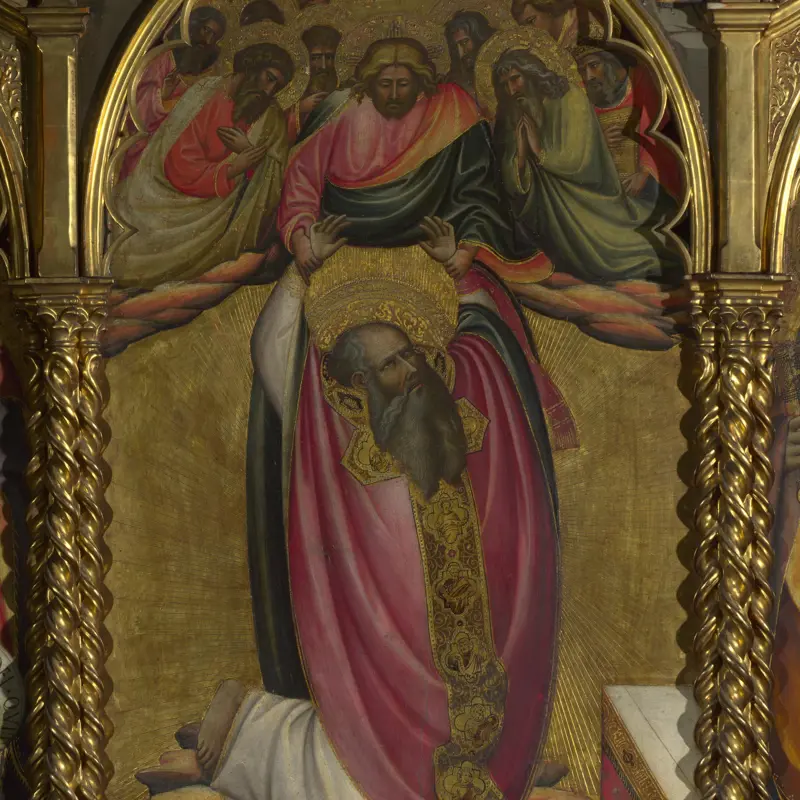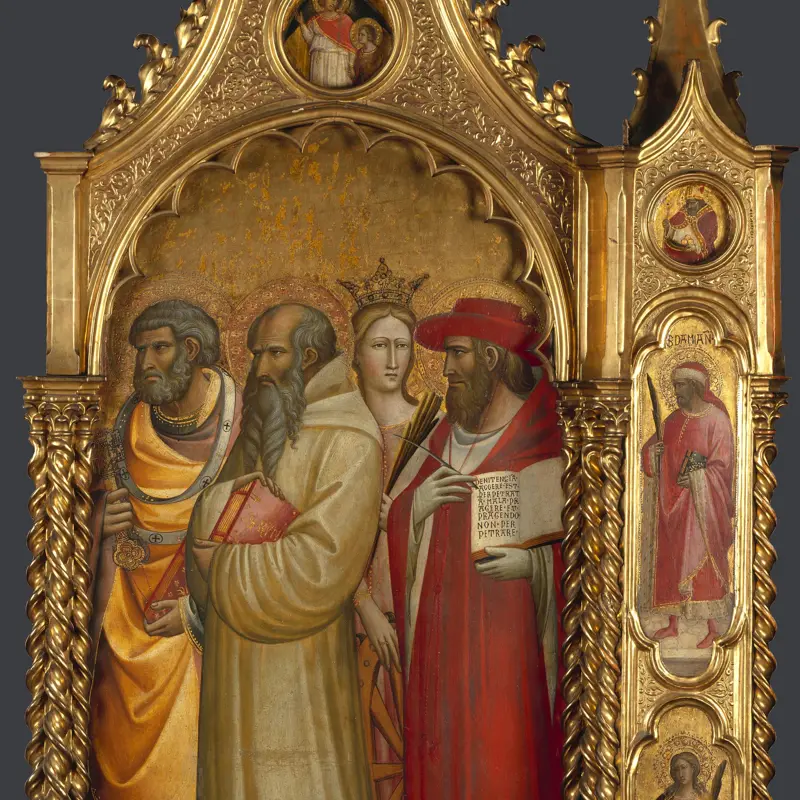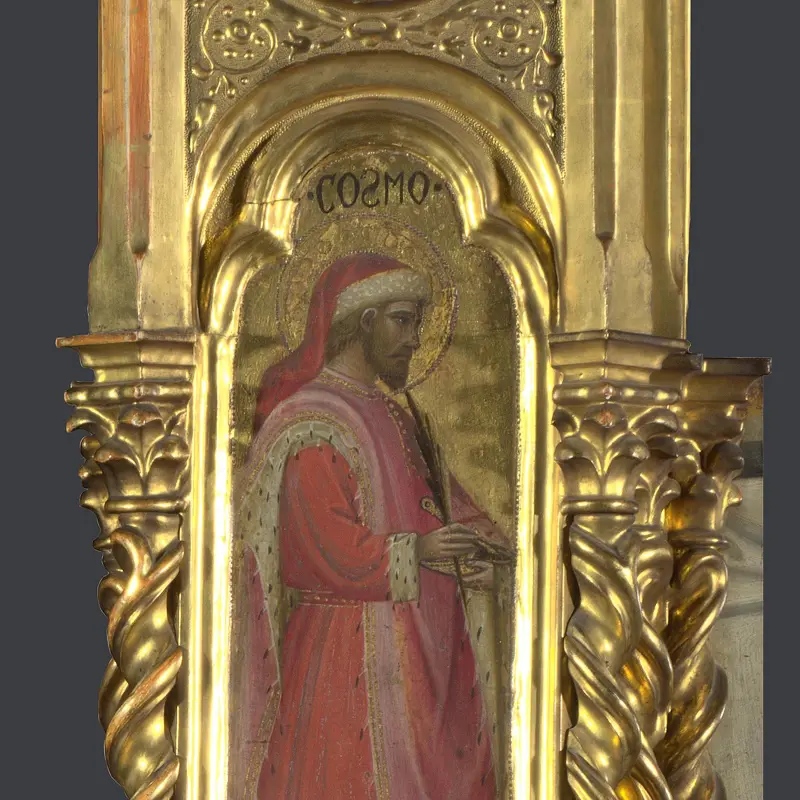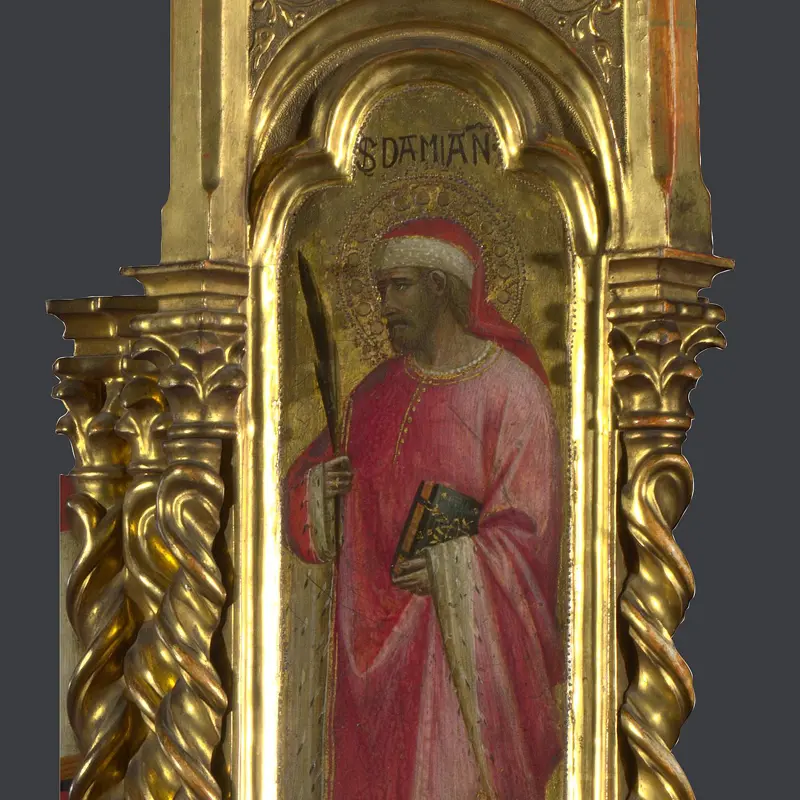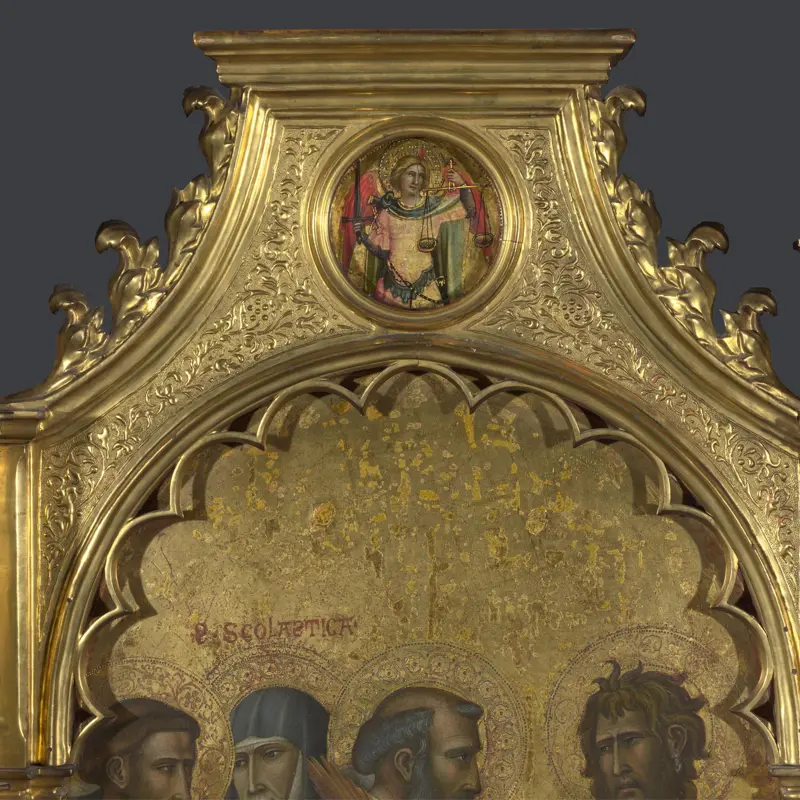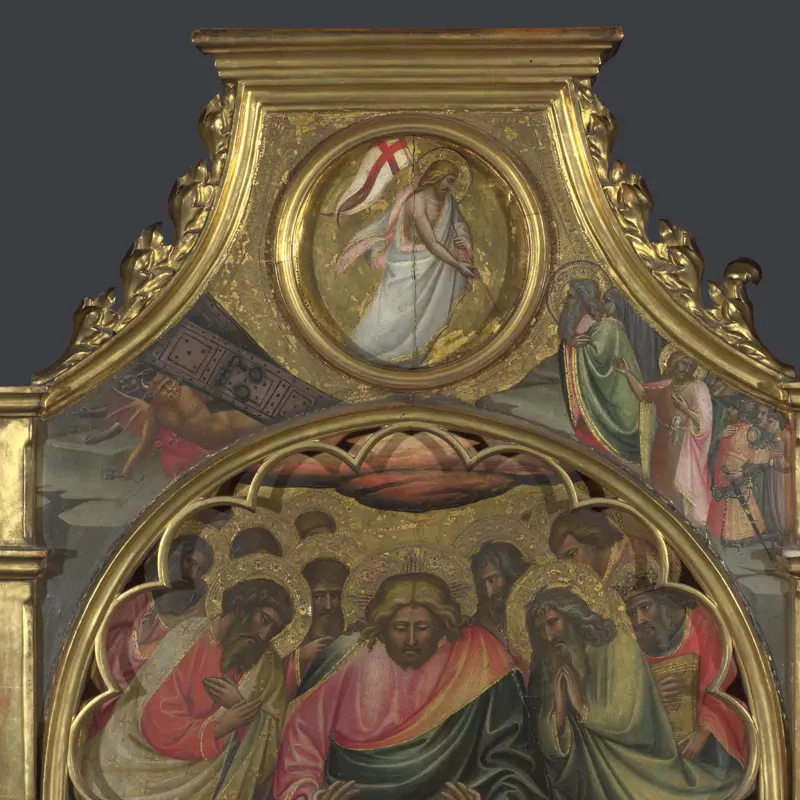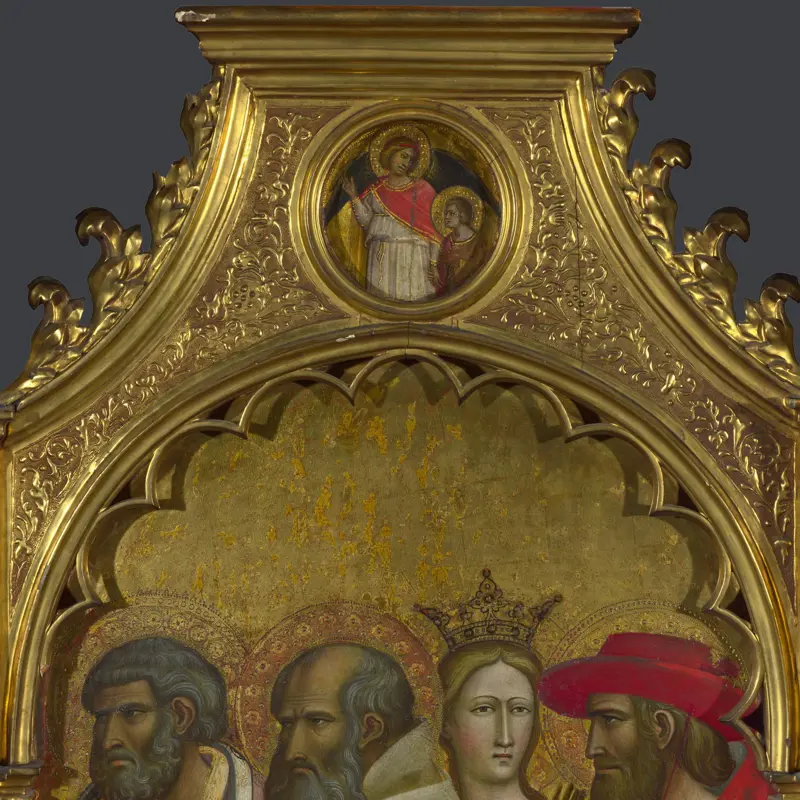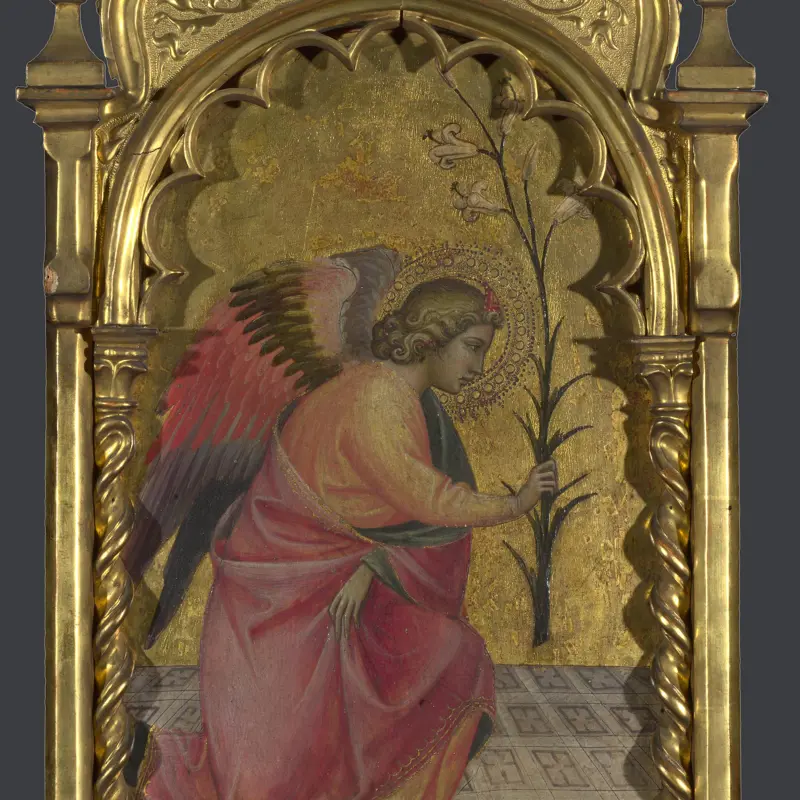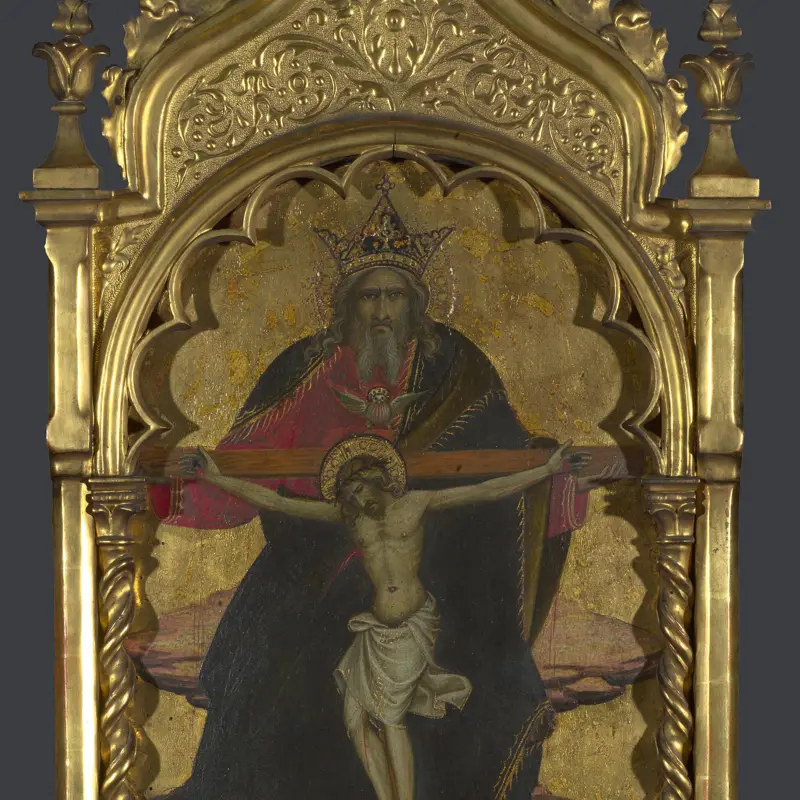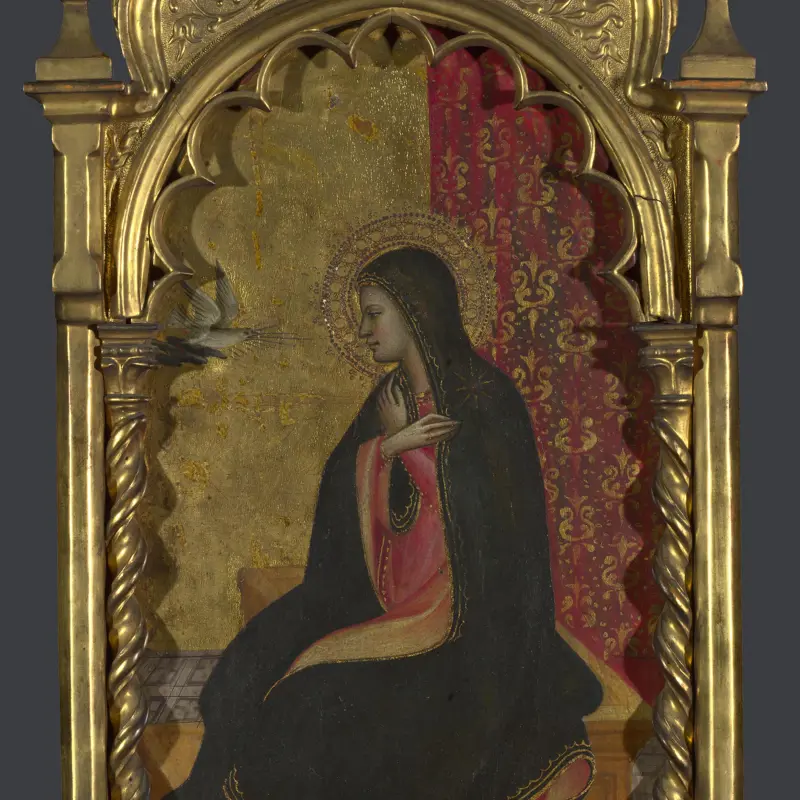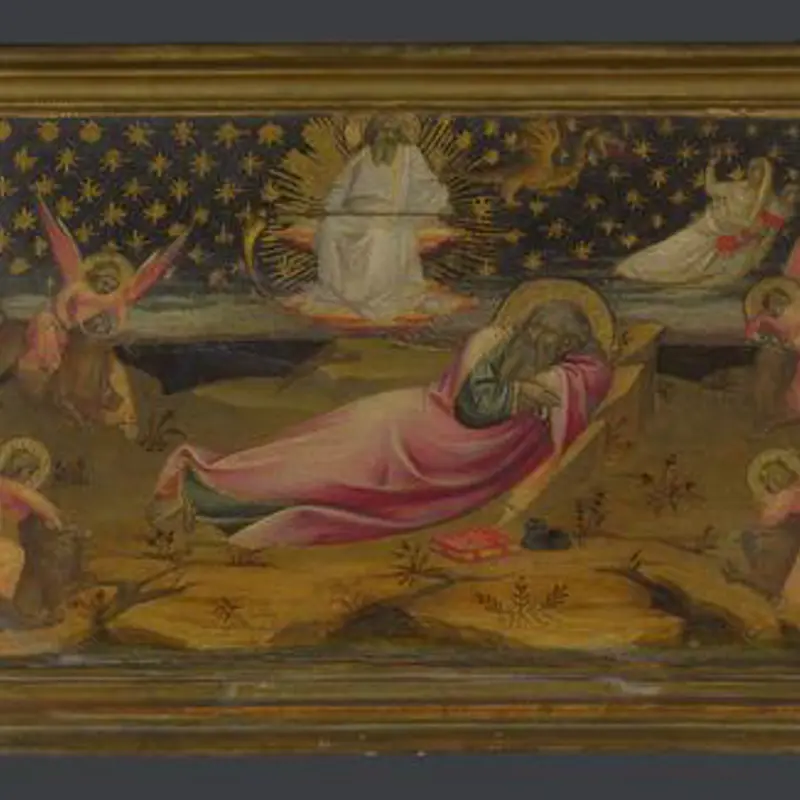Giovanni dal Ponte, 'Saints Raphael and Tobias: Roundel above Right Panel', about 1420-4?
About the work
Overview
In this small, circular painting a young boy holds a fish in one hand and clasps the hand of an angel with the other. This is the story of Tobias and the angel: Tobias caught a large fish in the Tigris and was advised by the Archangel Raphael to keep its internal organs as a cure for his father’s blindness.
The picture comes from a large polyptych (a multi-panelled altarpiece) painted in the 1420s by the Florentine artist Giovanni dal Ponte, which sat on the high altar of the church of the Camaldolese nunnery of San Giovanni Evangelista at Pratovecchio in Tuscany. Several of its panels are now in the National Gallery’s collection.
Key facts
Details
- Full title
- Saints Raphael and Tobias: Roundel above Right Panel
- Artist
- Giovanni dal Ponte
- Artist dates
- About 1385 - 1437
- Part of the group
- Ascension of John the Evangelist Altarpiece
- Date made
- About 1420-4?
- Medium and support
- Egg tempera on wood (probably poplar)
- Dimensions
- 13.4 × 13.4 cm
- Acquisition credit
- Bought, 1857
- Inventory number
- NG580.8
- Location
- Not on display
- Collection
- Main Collection
Provenance
Additional information
Text extracted from the ‘Provenance’ section of the catalogue entry in Dillian Gordon, ‘National Gallery Catalogues: The Fifteenth Century Italian Paintings’, vol. 1, London 2003; for further information, see the full catalogue entry.
Exhibition history
-
2011Devotion by Design: Italian Altarpieces before 1500The National Gallery (London)6 July 2011 - 2 October 2011
Bibliography
-
1951Davies, Martin, National Gallery Catalogues: The Earlier Italian Schools, London 1951
-
1986Davies, Martin, National Gallery Catalogues: The Earlier Italian Schools, revised edn, London 1986
-
2001
C. Baker and T. Henry, The National Gallery: Complete Illustrated Catalogue, London 2001
-
2003Gordon, Dillian, National Gallery Catalogues: The Fifteenth Century Italian Paintings, 1, London 2003
About this record
If you know more about this work or have spotted an error, please contact us. Please note that exhibition histories are listed from 2009 onwards. Bibliographies may not be complete; more comprehensive information is available in the National Gallery Library.
Images
About the group: Ascension of John the Evangelist Altarpiece
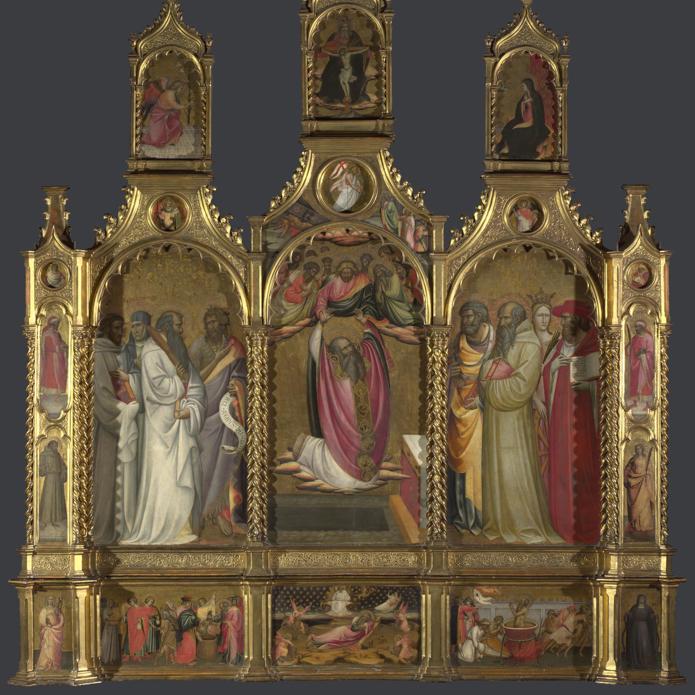
Overview
This large, gilded polyptych (multi-panelled altarpiece) is one of the few almost complete early Renaissance altarpieces in the National Gallery’s collection. It was made for the church of San Giovanni Evangelista, in Pratovecchio, Tuscany, probably in the 1420s.
Altarpieces on the high altar had to show the saint to whom the church was dedicated. Here, in the centre panel, we see Saint John the Evangelist being raised to heaven by Christ. A crowd of saints seems to watch from the large panels on either side.
The nuns at Pratovecchio were Camaldolites – a small, strict religious order found mainly in Italy – and the saints on the altarpiece would have been those who were important to them. This is one of the few surviving paintings of this date which might well have been commissioned by women – two abbesses – for the use of women.

